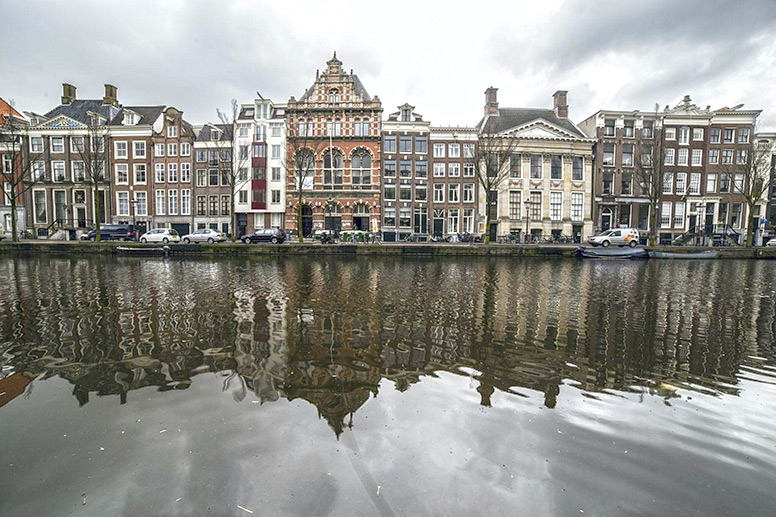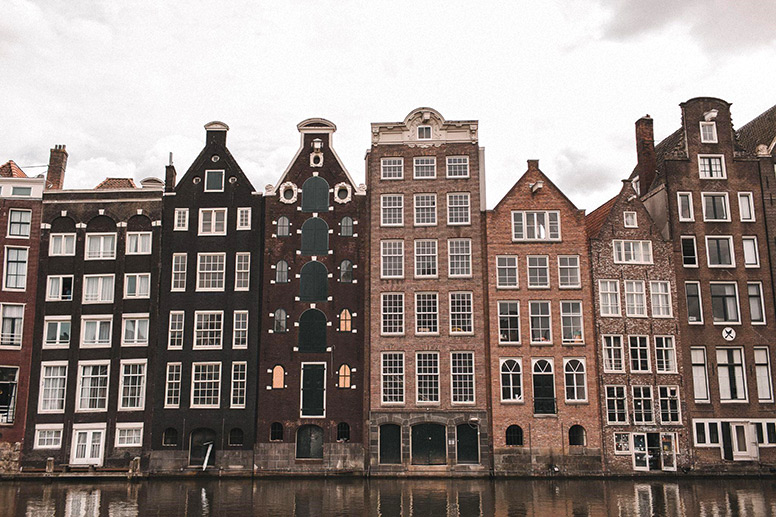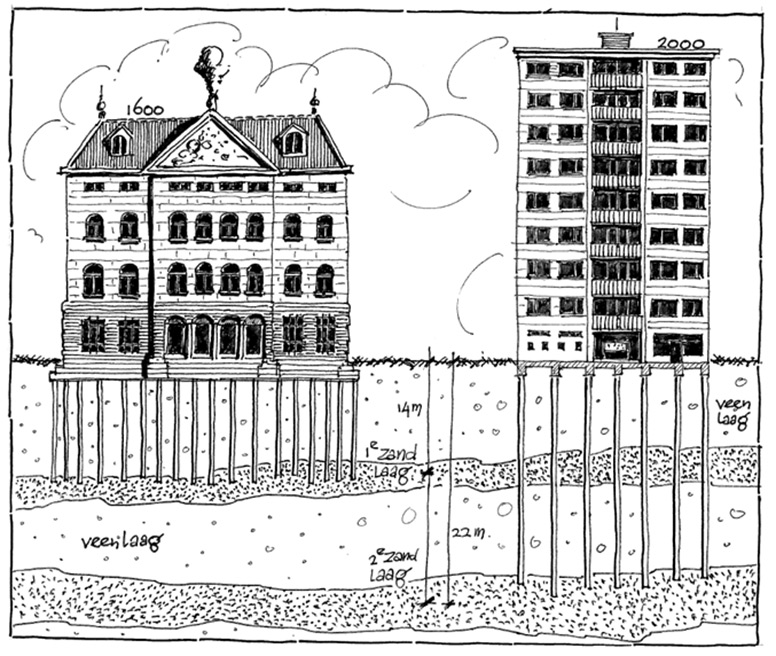Dutch Architecture: Exploring Amsterdam's Wonky Wonders
Dutch architects are considered to be masters of space and are internationally acclaimed for their innovative designs and their enormous influence on contemporary architecture.
Although Dutch architects have delivered some astonishing builds during the last century (think of Amsterdam's "Dancing Houses" and Rotterdam's "Urban Forest"), one cannot help but look back at the earliest architectural wonder that the Netherlands brought us: Amsterdam's Dancing houses. We're taking a look at these wonderfully wonky structures to show just how far back the era of great Dutch architecture stretches.

When you think of the Netherlands, the first picture that usually comes to mind is one of Amsterdam's "Dancing Houses" - those beautifully tall and extremely narrow traditional Dutch buildings that can be found all along the canals of the city. These buildings can be traced back to the 17th century and have captured the eyes of many keen architecture enthusiasts who are baffled by the colourful houses that seem to lean on each other for support.
Steep Stairs
The height and narrowness of the buildings can be attributed to Dutch homeowners who wanted to avoid paying a specific type of tax based on the width of their houses. While building narrow and up could lower taxes, it produced another issue that homeowners had to face: super steep stairs.
Since floor space was so precious, Dutch architects had to create staircases that were steep and narrow. Today, those who immigrate to the Netherlands from other countries typically meet these infamously steep Dutch staircases with immense fear. To the Dutch, climbing these stairs comes as second nature.

Despite instilling fear among tourists, steep stairs also hamper the moving of furniture in and out of the house - especially if it has to be moved beyond the ground floor. But, as the Dutch are known to be innovative, they found a way to move furniture into these houses without ever having to utilise the staircase.
Hoisting hooks can be seen attached to the buildings right above the highest window. These hooks were (and are still) used to lift furniture and move them into the houses through the windows. To further simplify the furniture moving process, houses were also slanted to the front so that furniture could not cause structural damage to the building when being hoisted up. Therefore, when you see a dancing house leaning slightly forward, you can rest assured knowing that it was intentionally built like that.
Long Poles
Houses that lean sideways, however, were not designed to do so. Since Amsterdam's soil consists mostly of fen and clay, all structures in the city have been built on wooden poles that extend over ten metres into the ground.
This was done to fix the poles into the solid layer of sand below the riverbed so that the houses could be built on a stable foundation. As the poles began to rot and decay, some houses began slanting to the side, which also caused them to lean on neighbouring buildings. In recent years, new buildings have been built on poles of steel to prevent them from doing the same.

Past the structural aspects of Amsterdam's wonky wonders lies the unique style in which these houses have been built. The most predominant architectural style found in these buildings is the sober Dutch Baroque style, which can especially be seen in the buildings' roof gables.
When faced with the beauty of these builds, one can understand why cycling in the Netherlands is favoured above all other modes of transportation - because how can you rush past such architectural brilliance?
Dutch craftsmanship is renowned for a reason. Stretching as far back as the 17th century, the Netherlands has been a breeding ground for architectural wonders.
Amsterdam's dancing houses are no exception. Despite their imperfections, these buildings continue to astonish anyone who lays eyes upon them and it's obvious why. If charm could be encapsulated by houses, Amsterdam's wonky wonders would be it.










